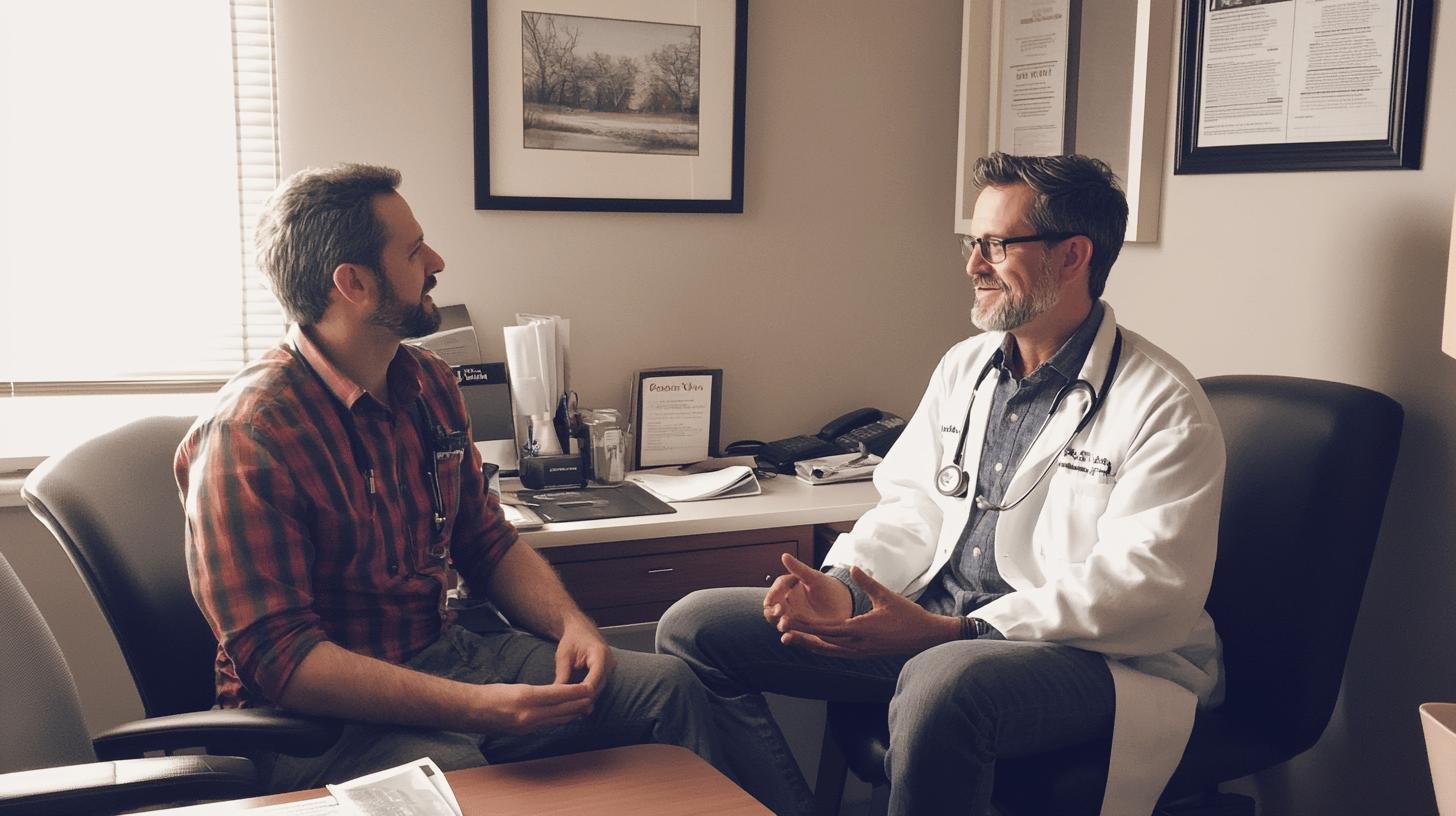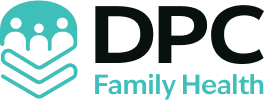TL;DR:
- DPC reduces healthcare costs by 20-30% by eliminating insurance middlemen; flat monthly fees range from $50-$150.
- Traditional costs: monthly premiums ($400-$500), co-pays ($20-$40), and deductibles ($1,000-$2,000).
- High patient satisfaction due to predictable costs and personalized care.
- Appointments average 30-60 minutes; doctors see 600-800 patients vs. 2,500 in traditional settings.
- Same-day or next-day visits and 24/7 communication (phone/text) enhance access.
- Focus on preventive and personalized care improves health outcomes and reduces ER visits.
Ever feel like healthcare costs keep climbing with no end in sight? That’s where Direct Primary Care (DPC) steps in, offering a game-changing solution that could save you some serious cash. With DPC, we’re talking flat monthly fees and zero insurance headaches, making healthcare expenses predictable and transparent. Imagine cutting your healthcare costs by 20-30%—sounds too good to be true, right? Well, it’s not, and I’m here to explain how DPC benefits can be the financial lifeline your family needs.
Cost Savings with Direct Primary Care

Direct Primary Care (DPC) offers significant cost-saving benefits by eliminating insurance middlemen and reducing administrative costs. Instead of dealing with insurance claims and approvals, DPC operates on a transparent pricing model. Patients pay a flat monthly fee, covering routine check-ups, lab tests, and minor procedures. This makes healthcare costs more predictable and manageable.
Comparative analyses show that DPC can reduce healthcare costs by 20-30% for patients and employers.
| Expense Type | Traditional Healthcare | DPC |
|---|---|---|
| Monthly Premium | $400-$500 | $50-$150 |
| Co-pay per Visit | $20-$40 | $0 |
| Annual Deductible | $1,000-$2,000 | $0 |
| Out-of-pocket Costs | $3,000-$5,000 | $0-$1,000 |
Patients report high satisfaction with the DPC model due to its transparent and predictable costs. Unlike traditional healthcare, where unexpected bills can arise, DPC’s straightforward fee structure allows better financial planning.
Additionally, DPC provides more personalized care, helping manage chronic diseases effectively. This focus on continuous and preventive care improves health outcomes and reduces costly emergency room visits and specialist referrals.
Improved Patient-Doctor Relationships in DPC

Patient-centered care is at the heart of Direct Primary Care (DPC). Unlike traditional models, where doctors juggle large patient lists and rush through appointments, DPC offers a more personal touch, significantly changing how care is delivered and received.
In DPC, appointments often last 30-60 minutes, compared to the average 15-20 minutes in traditional settings. This extra time allows doctors to understand patients and their health needs better. DPC practices usually have smaller patient panels—around 600 to 800 patients per physician, whereas traditional practices can have up to 2,500 patients. With fewer patients, doctors can focus more on each individual.
Benefits of Longer Doctor Visits:
- Thorough consultations: More time to discuss concerns in detail.
- Personalized care plans: Tailored to specific health needs.
- Better chronic disease management: More frequent check-ins.
- Stronger relationships: Builds trust between you and your doctor.
- Early detection: More time for preventive care and catching issues early.
Patients rave about the personalized attention and comprehensive care they get at DPC. It’s not just about treating symptoms; it’s about building a relationship. This leads to higher satisfaction and better health outcomes. When your doctor understands you well, you’re not just another number—you’re a priority.
Enhanced Access to Care with DPC

One standout benefit of Direct Primary Care (DPC) is enhanced access to healthcare services. Unlike traditional models, where you might wait weeks for an appointment, DPC often offers same-day or next-day visits. This means you can get care when needed—no more long waits or being squeezed into an overbooked schedule.
Plus, with a smaller patient panel, doctors can spend more time with patients, making each visit more thorough and personalized.
Another game-changer is communication. Have you ever wished you could text your doctor a quick question? With DPC, you can! Many practices offer 24/7 communication through phone, text, or email. This direct line of communication allows you to get advice, refill prescriptions, or follow up on your treatment plan without an appointment. It’s healthcare at your fingertips.
The 24/7 availability and same-day appointments mean you don’t stress about getting medical help outside office hours. Got a late-night fever or a weekend injury? Your DPC doctor is just a call or text away. This round-the-clock access provides peace of mind and ensures you can manage your health proactively, catching issues early and avoiding unnecessary ER visits.
Enhanced access to care is a cornerstone of DPC, making healthcare more accessible, responsive, and patient-friendly.
Better Health Outcomes through DPC

Direct Primary Care (DPC) focuses on improving health outcomes. By emphasizing personalized care and preventive measures, DPC helps you stay healthier and reduces the need for emergency interventions.
Personalized care plans are a game-changer. In DPC, your doctor has more time to get to know you and your medical history. This allows them to create a care plan tailored to your specific needs. Preventive medicine is a big part of this. Instead of treating symptoms, DPC emphasizes regular check-ups and screenings to catch issues early. This proactive approach helps prevent serious health problems and keeps you on track with your wellness goals.
Another considerable benefit is reducing emergency room visits and hospitalizations. Your DPC doctor is more accessible and familiar with your health, making them better at managing chronic conditions. This means fewer trips to the ER and fewer hospital stays. Comparative analyses with traditional healthcare models show that DPC can significantly reduce unnecessary emergency room visits and hospitalizations, lowering healthcare costs.
So, in a nutshell, DPC isn’t just about treating you when you’re sick—it’s about keeping you well and avoiding costly, stressful emergencies.
DPC vs Traditional Healthcare: A Comparative Analysis

Regarding cost structures, Direct Primary Care (DPC) offers a breath of fresh air compared to traditional healthcare. Instead of paying high monthly premiums, co-pays, and deductibles, DPC patients pay a flat monthly fee ranging from $50 to $150. This fee covers a broad spectrum of services, eliminating annoying surprise bills. In contrast, traditional healthcare often involves monthly premiums of $400-$500, co-pays of $20-$40 per visit, and annual deductibles that can hit $2,000. Overall, DPC can reduce healthcare costs by 20-30% for patients and employers.
Let’s talk about patient care and accessibility. With DPC, you’re not just another number in a crowded waiting room. DPC doctors usually see fewer patients—about 600 to 800 per physician—than 2,500 patients in traditional practices. This means you get more one-on-one time with your doctor, often 30-60 minutes per visit, versus the rushed 15-20 minutes in conventional settings. DPC doctors are more accessible, offering same-day or next-day appointments and even 24/7 communication through phone, text, or email. Imagine having your doctor just a text away!
Benefits of DPC over Traditional Models:
- Lower costs: Flat monthly fees with no hidden charges.
- More time: Longer, unhurried appointments.
- Better access: Same-day or next-day visits.
- Direct communication: 24/7 access via phone or text.
- Personalized care: Tailored to your specific health needs.
In summary, DPC shines as a more affordable, accessible, and personalized alternative to traditional healthcare. By cutting out insurance middlemen and focusing on patient-centered care, DPC saves money and enhances the quality of care you receive.
Final Words
Saving on healthcare while getting excellent care isn’t a dream with DPC. You’ve seen how this model can cut costs by 20-30%, thanks to transparent pricing and no insurance middlemen.
Better patient-doctor relationships with smaller patient panels and longer visits mean you’re not just a number. Plus, same-day appointments and 24/7 access make healthcare super convenient.
All in all, the DPC benefits are too good to ignore. Are you ready for healthcare that works for you?
FAQ
What does DPC stand for in healthcare?
DPC stands for Direct Primary Care. A healthcare model focused on direct financial relationships between patients and doctors without insurance.
Is DPC worth it?
DPC can be worth it for those who value transparent pricing, extended doctor visits, and fewer out-of-pocket expenses. Many find increased satisfaction and cost savings significant benefits.
What are the benefits of direct primary care?
Direct Primary Care offers benefits like:
- Transparent pricing
- Extended appointment times
- Reduced out-of-pocket expenses
- High patient satisfaction
- Improved chronic disease management
What is the primary purpose of DPC?
The primary purpose of DPC is to enhance healthcare access and affordability by eliminating insurance intermediaries, allowing for direct financial relationships between patients and providers.
What are the pros and cons of Direct Primary Care?
Pros:
- Transparent costs
- Longer visits
- Direct access to doctors
Cons:
- Not a replacement for insurance
- Limited to primary care services
What does a DPC doctor do?
A DPC doctor provides primary care services, including routine check-ups, lab tests, and minor procedures, usually covered by a flat monthly fee.
What is Direct Primary Care insurance?
Direct Primary Care is not insurance. It’s a subscription-based model where patients pay monthly for primary care services.
Is Direct Primary Care near me?
Check local directories or specific DPC networks online to find DPC clinics near you.
What is the monthly cost of Direct Primary Care?
The monthly cost for DPC typically ranges from $50 to $150, covering various primary care services.
What DPC medical procedures are included?
DPC often includes routine check-ups, lab tests, and minor procedures, all of which are typically covered by the monthly fee.
What is the abbreviation DPC in medical terms?
DPC stands for Direct Primary Care in medical terms.

